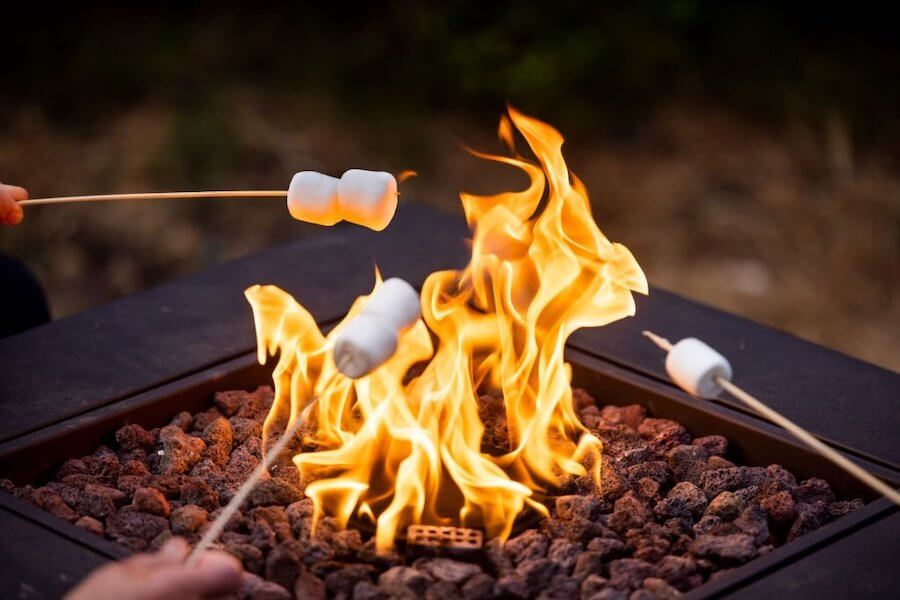The answer is not entirely clear-cut regarding using smokeless coal in fire pits.
Some people argue that it is not possible to use smokeless coal in their fire pits, while others believe that using it as fuel in their fire pits is possible.
So what is the truth? Can you use smokeless coal in a fire pit? Let’s explore!
Table of Contents
Can You Use Smokeless Coal in a Fire Pit?
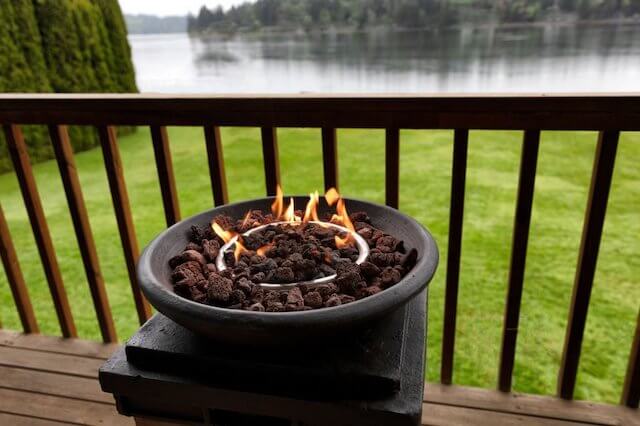
The answer is Yes. Smokeless coal is one of the fuels that are used for fire pits.
When buying coal for your grill or fire pit, it’s not hard to see that you have other options than charcoal. One of them is smokeless coal.
Smokeless coal was discovered long ago and is considered an old-fashioned alternative to charcoal (or anthracite coal) or wood.
Coals are primarily utilized for fire pits and grilling, whereas natural gas is typically found inside homes.
Many people believe natural gas and charcoal are very similar, but there is a significant difference between the two.
You will need to spend some time comparing both choices to determine which one will be suitable for you.
If you decide to use smokeless coal rather than regular charcoal, you need to ensure that you take some safety precautions that should be done.
For example, you need to prepare proper safety equipment when utilizing smokeless coal since it features more chemicals than regular charcoal.
Always remember that they are not interchangeable, although they seem similar!
What Are The Benefits and Drawbacks Of Smokeless Coal?
Benefits
There are various pros when it comes to using smokeless coal in the fire pit as a substitute for firewood, including:
- Burning efficiency.
- It is an eco-friendly option.
- Smokeless coal is an affordable option.
- Smokeless coal is easy to find and buy at home improvement centers or local hardware stores.
Drawbacks
Despite the benefits of smokeless coal, it does have some downsides that might make you think, such as:
- Smokeless coal is typically harder to ignite.
- Dust and fines can be produced.
- There are other options that are more effective (we’ll cover them below).
Where Do I Buy Smokeless Coal?
It is easy to purchase smokeless coal at home improvement centers or local hardware stores, as they are preeminent for the fireplace. Just go out and hunt around a bit, and you’ll find it quickly.
In addition, smokeless coal is easy to recognize thanks to its distinctive gray and pink coloring. We recommend purchasing quality fuel as cheaper products may include much more chemicals.
Also, poor-quality coal might not burn as efficiently as high-quality ones.
Some Fire Pit Fuels That You Could Try
Wood
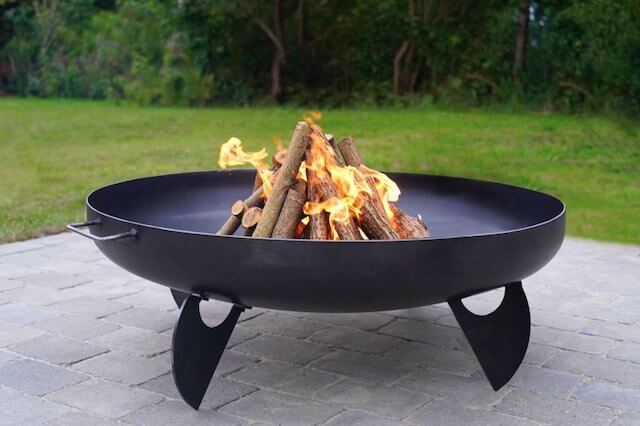
Wood is the most common fuel used for fire pits for many good reasons, such as:
- Feel
- Aroma
- Classic look
- It’s a lot cheaper
Hardwoods, such as beech and ash, are very popular for home use. Besides, others like apples and hickory can provide decent aroma and flavor.
However, this option also has some disadvantages, such as it raises many problems in urban and city settings.
In addition, a wood fire pit is harder to keep going and requires regular cleaning. It emits smoke (which may prove toxic in any closed area) and is a fire hazard.
Charcoal
If you prefer to get many conveniences of wood fire pits but avoid their drawbacks, you can’t go wrong with hardwood charcoal.
Charcoal is also available in wide varieties. For example, “pressed” charcoal is produced by mixing wood pieces with seeds and other materials. It is an odor- and smoke-free option.
If you prefer some aroma, you should choose pressed charcoal combined with smoking woods, such as hickory. Also, lump charcoal can generate intense heat with a chemical-free flame.
Generally, charcoal is easy to get, use, and clean. This fuel can create high but predictable amounts and be smoke-free if you choose the right charcoal type for that purpose.
Pros
- Cheap.
- Suitable for cooking.
- Easy to get, use, and clean.
- It might be odor-free and smoke-free.
Cons
- Not an eco-friendly option.
- Fire hazard.
Ethanol and Bioethanol
Bioethanol is a natural byproduct of harvesting sugar cane, rice, corn, and other mass-produced commodities.
It is gaining popularity for many good reasons. It is easy to clean and is the ultimate renewable form of energy.
As we all know, smoke is not good for the environment. But the bioethanol fire pit does not create smoke, making it environmentally friendly.
Bioethanol is one of the great options for those concerned about the planet’s health as it does not emit smoke and other harmful toxic fumes.
The bioethanol fire pit is easy to install, hassle-free, lightweight, and environmentally friendly.
The fuel is supplied in cans, so preparing bulky tanks or pipelines is unnecessary.
If bioethanol is widely used, it could cut greenhouse gas emissions such as nitrogen oxide and carbon monoxide.
So it’s not surprising that many people consider it “the super fuel,” which will surely be used more commonly in fire pits.
Pros
- Affordable
- No pipelines required
- No sound or embers
- Low maintenance
- No venting required
- Clean and low-cost fuel
Cons
- Not a primary source of heat
Wood Briquettes
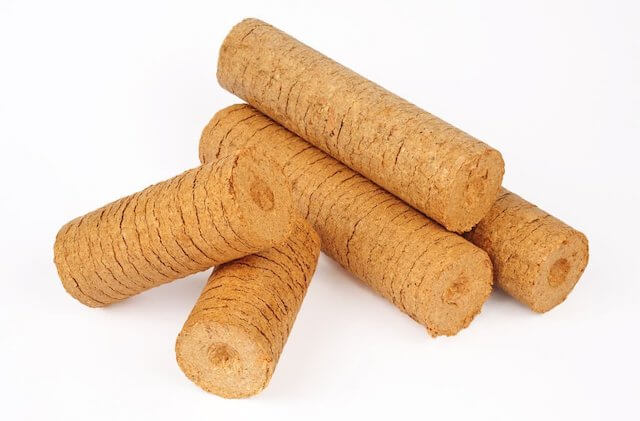
This product is another wood-derived option that is great for fire pit use and the environment. Wood briquettes are available in types, and widely available in stores.
The wood briquette is also dense, which will burn longer and create more consistent heat than normal wood. This fuel is smokeless and makes fewer pollutants, making it environmentally friendly.
The wood bridge fire pit is also easy to handle, the fuel is widely available, and the setup and maintenance are easy as normal wood-burning fire pits.
Pros
- Longevity
- Affordability
- Easy to handle
- Steady temperature
- Create more consistent
- Easy to setup and maintenance
Cons
- Chemical smell
- Ash production
- Harder to light
Gel Fuel
This fuel is made by mixing low-sulfur coal with Anthracite and Petcoke. Gel Fuel is usually available as smokeless ovals or briquettes using a binding agent.
This fuel is smoke-free, clean, and can maintain high heat consistently, allowing it to be widely used in fire pits.
It has gained popularity for cooking at home in many areas worldwide, especially in crowded areas in China and parts of Europe.
Pros
- Produces real flames
- No location restrictions
- Long burning
- Cost efficient
- Decorative value
- Cleanly in every environment.
Cons
- It might be dangerous.
- No flame regulation
- Consumes oxygen
- No coherent flames
- Lose a lot of heat when used outdoors.
Natural Gas
It is considered one of the “clean” fuels that are environmentally friendly and easy to start. It can run continuously without posing fire hazards and much fuss.
However, it requires a costlier initial installation than a wood-fuel fire pit, and you will need to prepare a natural gas pipeline.
Pros
- No Refills
- Permanent Installation
- Quickly turn on the fire pit
- No hassle with wood
- Normally five times less expensive than propane
Cons
- Less Efficient
- Replace gas bottles
Propane
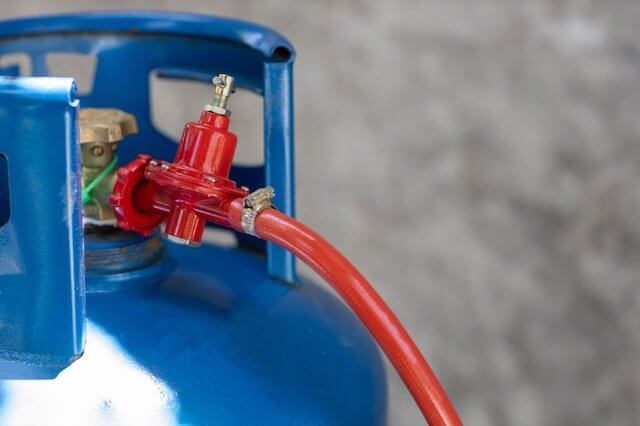
Propane is a by-product of petroleum refinement as well as the natural gas process. It is supplied in large tanks instead of through pipelines, making it more convenient for the fire pit.
Propane, like natural gas, is one of the “clean” fuels that do not emit carbon monoxide, carbon dioxide, and toxic chemicals.
It is usually more expensive than natural gas and may create a potential fire hazard close to the ground.
The significant reason to opt for propane fuel over wood is that it allows you to control the intensity of the fire better than all you need to do is twist a knob.
So it is easy to reach maximum heat without worrying about how many logs you need to throw on your fire pit.
Pros
- Easy To Use
- Affordable
- Portable
- No Ashes
- No Wood Collecting
- Safe
Cons
- No Campfire Smell
- Less Heat Than Wood
- Propane Needs Refilling
- Not For Cooking Full Meals
Things You Should Never Burn in Your Fire Pit
Here are 10 materials you should never burn on a fire pit:
- Plastic
- Aerosols
- Softwood
- Wooden pallets
- Household waste
- Cheap furniture
- Fire Accelerants
- Cardboard boxes
- Magazines and newspapers
- Treated or painted wood
- Garden weeds like ivy or sumac
The Bottom Line
Can you use smokeless coal in a fire pit? The answer is yes. Smokeless charcoal has become in vogue as one eco-friendly alternative to traditional firewood.
In addition, you also have many other options to replace traditional wood or charcoal, such as bioethanol, wood briquettes, gel fuel, natural gas, and propane.
Just choose an option that works best for you. Thank you for reading!

